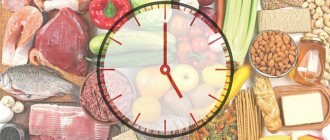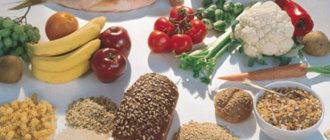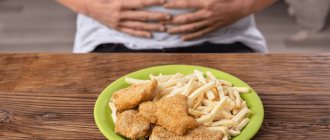Cottage cheese is one of the most healthy and easily digestible food products. Thanks to its regular use, it is possible to replenish the missing amount of vitamins, as well as micro- and macroelements. Cottage cheese is absorbed almost completely. The table classifies lactic acid products as slowly digestible foods. Its inclusion in the regime has a beneficial effect on the body, and when consumed regularly before bed, it helps to get rid of excess weight. The calorie content of a product can vary significantly. The duration of digestion depends on this indicator. Age, health status and the time of day at which cottage cheese is taken affect the metabolic rate.
Digestion process
Usually, people do not think about how this or that food is digested in the stomach. As a rule, people are only concerned with the taste properties of the product. And information about how the digestive system works is not particularly interesting or important for most people. It is worth saying that the human body can digest any food. Moreover, both plant and animal origin. Since the normal functioning of the stomach and intestines is an important function. It ensures the vital functions of the whole organism. Therefore, it is worth thinking about which foods are digested and how.
How does digestion work in the body? The essence of the process is that the food that enters the stomach is broken down into its components. Next, the beneficial elements are absorbed into the blood and absorbed by the body. The entire process of digestion of the food consumed takes from one to three days.
Food groups
All consumed foods can be divided into four main groups according to digestion time. Thus, you can determine how long the cottage cheese is digested. Below are the main digestive groups.
- The first includes foods that contain large amounts of carbohydrates. This group includes fruits, vegetables, juices and kefir. The entire digestion process will take about an hour or less.
- The second includes foods that contain large amounts of protein, namely: dried fruits, nuts, dairy products and greens. Their residence time in the intestines is two hours.
- The third digestion group includes foods that contain fat or fat and protein. This group includes various cereals, mushrooms, bread, cottage cheese, and cheese. Digestion time takes about three hours. More details about how much cottage cheese is digested in the stomach will be discussed below.
- The fourth group includes foods that take the longest to digest or are not digested at all. This includes fish, meat, canned food, tea and coffee.
A little about curd “delicacies”
Today you can see a wide range of cottage cheese products on grocery store shelves, but they often bear little resemblance to cottage cheese as such. Let's figure out which of these products a person with gastritis can safely eat.
Cheesecakes
It is important to carefully read the label and find out the exact name of the product. If it is “curd cheese”, then you can safely buy it, but it is better to refrain from purchasing a “curd product” - you will not find natural ingredients in it. A patient with gastritis should not eat flavored or glazed cheeses. Even natural chocolate for gastritis must be limited, and even more so confectionery icing, which has nothing to do with chocolate.
Cheeses
It is allowed to eat low-fat curd cheeses, without spicy additives and hot spices, which can irritate the sensitive mucous membrane of the stomach. Curd cheese with a dense consistency must also be crushed before use.
Vareniki
Buying ready-made dumplings in supermarkets is not a good idea. They contain a lot of unnecessary additives that the stomach can react to, and the amount of dough clearly prevails over the filling. But the dough is their most harmful component; it is too difficult to digest. Therefore, you can eat dumplings only during a period of stable remission and no more than 2 times a week. It’s better to cook them yourself and give preference to lazy dumplings. If you still want to try the classic version, then instead of water you need to add whey to the dough to reduce the load on the stomach.
Pies
Also acceptable for gastritis during remission, but not semi-finished products, but reliable home-cooked products. The most dietary option is baked pies made from wheat and oat flour with non-sour cottage cheese. Under no circumstances should you fry them; the stomach always reacts negatively to fried food.
Cakes
People with gastritis should avoid such sweets. Even if the cottage cheese itself in the cake does not cause harm, the other components are quite capable of this. In any case, the cake requires the presence of some kind of cream, an abundance of carbohydrates and fats. Even the most dietary cake has nothing to do with a diet for gastritis. It’s better to treat yourself to cottage cheese casserole or pies.
Phases and stages of digestion
The process of digestion begins when a person sees food, smells it, and wants to eat it. This stage is called the head phase. A person begins to produce saliva and gastric juice. A feeling of hunger appears that you want to satisfy.
The next stage of the digestive process is chewing food and wetting it with saliva. Next comes the gastric phase. It lies in the fact that in the stomach food breaks down into small components. They are absorbed into the body. This stage of the digestive process is called the intestinal stage. Next comes the gastric phase. This is where food is broken down by stomach acid.
How long does it take to digest cottage cheese?
Cottage cheese is a very healthy food. Its digestion time is about three hours. It belongs to the third group of products in terms of digestion time. This category, as you remember, also includes cheese.
You should know that how much cottage cheese is digested is affected by what time of day it was eaten. Now let's look at the issue in more detail.
- How long does it take to digest cottage cheese if you eat it at lunchtime? The process will take about two hours. This is due to the fact that the digestive system is actively working during this period of the day.
- At other times of the day, the sour product eaten will take three hours or longer to digest.
- Also, how much cottage cheese is digested is influenced by the characteristics of a particular person’s body. The process is influenced by factors such as the body’s compatibility with products that contain milk, the person’s age and health status.
- How long does it take to digest low-fat cottage cheese? You should know that the lower the fat content of the product, the faster this process occurs.
Now you know how long it takes for cottage cheese to be digested in the stomach. How is this product prepared? It is produced from milk by ripening. In order to get cottage cheese, you need to heat the fermented milk, but not bring it to a boil. As a result of this treatment, white lumps appear. Next, the resulting liquid is removed. This is how cottage cheese is made. It contains many useful microelements, namely calcium, vitamins, protein and amino acids. The first named element is necessary for the body to strengthen bones.
Digestion time in the human stomach
Anatomy
27.07.2017
14.6 thousand
9.8 thousand
5 minutes.
In the stomach, important processes of mechanical and chemical processing of food and its preparation for further digestion in the intestines occur.
Due to its bag-like shape, the stomach promotes the accumulation of food masses and their retention for some time. This is necessary for more complete processing of food. But not all foods are digested and absorbed at the same speed.
Depending on the type of food, food remains in the stomach from several minutes to several hours.
The human stomach is capable of digesting most of the foods that enter it. Food processing occurs through the production of two main components by the gastric glands - pepsin and hydrochloric acid. They come into contact with food that enters the stomach and transform it into chyme - a homogeneous mushy mass, which is then evacuated through the pyloric sphincter into the duodenum.
The process lasts from half an hour to several hours, depending on the type of food eaten. This happens in adults. In infants, the stomach is poorly developed, has a small volume and is capable of digesting only breast or cow's milk. Digestion in the stomach of a newborn baby lasts no more than three hours, which explains the need for frequent feeding.
The time it takes for food to be digested in the stomach is affected by the quality of the food. Based on this, we can distinguish 4 types of dishes:
- 1. Food exposed to gastric juice for more than 3 hours.
- 2. Dishes that take 2 to 3 hours to digest.
- 3. Products that remain in the stomach for 1.5 to 2 hours.
- 4. Food that does not require more than an hour to digest.
The first type includes almost all canned food, dumplings, meat, poultry, coffee and tea with milk, as well as pasta made from first-grade flour.
The second category of dishes includes bread and other pastries, hard cheeses, cereals, legumes, cottage cheese, all types of mushrooms, seeds and nuts. The third type includes different types of vegetables, dried fruits, herbs, dairy products (except hard cheeses and cottage cheese).
The fourth group includes vegetable and fruit juices, kefir, berries, fresh fruits (except bananas), and chicken eggs.
Digestion time for individual foods in the stomach:
| Products | Digestion time |
| Water | Goes straight to the intestines |
| Vegetable broth | Up to 20 minutes |
| Vegetable juice | Up to 20 minutes |
| Fruit juice | Up to 20 minutes |
| Fresh vegetables and vegetable salads without dressing | Up to 40 minutes |
| Berries and fruits that contain a lot of water | 20 minutes |
| Pears, apples, peaches | 30 minutes |
| Boiled vegetables | Up to 40 minutes |
| Corn, zucchini, all types of cabbage | Up to 45 minutes |
| Most root vegetables (except starchy ones) | 50 minutes |
| Fresh vegetable salads with vegetable oil | Up to 1 hour |
| Egg | 45 minutes |
| Fish | Up to 1 hour |
| Starchy vegetables | From 1.5 to 2 hours |
| Cereal porridge (buckwheat, millet, rice and others) | Up to 2 hours |
| Dairy products (milk, kefir, yogurt, fermented baked milk), except hard cheeses and cottage cheese | up to 2 hours |
| Legumes | up to 2 hours |
| Poultry meat | From 2.5 to 3 hours |
| Different types of seeds | 3 hours |
| Nuts | 3 hours |
| Beef and lamb | 4 hours |
| Pork | 5.5 to 6 hours |
Despite the fact that many products can be grouped into separate groups based on processing time, within the groups themselves there are also differences in the length of time they remain in the organ.
Drinking water does not carry an energy load, so it does not require digestion and a long stay in the stomach. Drinking on an empty stomach, it immediately enters the small intestine.
The rate at which fruits are processed in the stomach directly depends on their carbohydrate and water content:
- Grapes and citrus fruits take about 30 minutes to digest in the stomach.
- A ripe banana will be processed in 50 minutes, while a green one will take about an hour.
- It also takes about an hour to break down the pineapple pulp.
- The most difficult fruit to digest is mango, which takes about 2 hours.
The rate of digestion of dairy products is affected by their fat content, method of preparation and storage:
- Kefir will leave the stomach faster than any other product (up to 90 minutes).
- Curdled milk, yogurt and fermented baked milk will require up to 2 hours
- Low-fat cottage cheese will take about 2 hours to digest, while a fattier product will take up to 3 hours to break down.
Various types of cereals pass through the stomach in 2-3 hours. Legumes, although they are vegetable crops, require quite a lot of time to digest, as they contain a large amount of protein:
- Oat flakes will undergo splitting the fastest (up to 90 minutes). But whole grains can take up to 2 hours to process.
- For buckwheat, millet, and rice cereals, it takes about 2 hours.
- The stomach can handle corn in 150 minutes.
- Fresh peas stay in the stomach for up to 160 minutes.
- Boiled peas require about 3.5 hours to digest.
- The organ will spend 3 hours on lentils and beans.
The rate of digestion of bread depends on the grain from which it is made, as well as the ingredients added during the cooking process. Rye or wheat bread usually stays in the stomach for 2 to 3 hours.
The digestion time of hard cheeses depends on their fat content. Low-fat varieties can take up to 3 hours to process. Fat cheese made from whole milk will stay in the stomach for up to 5 hours.
Digestion of meat depends on many quality characteristics (fat content, freshness, etc.):
- Pork tenderloin leaves the stomach after 210 minutes of processing. The fattier parts take much longer.
- The organ needs to spend about 3 hours on lamb and beef.
- The heaviest product is lard, which can take up to a whole day to digest.
It takes the stomach about 90 minutes to process chicken breast. For the fattier parts it will take more than 2 hours. Turkey also takes a little over 2 hours to digest. Duck and goose, due to the fat content of the meat, can remain in the stomach for about 3 hours.
The speed of digestion of vegetables mainly depends on their starch and fiber content. And the more there are, the longer the digestion process will continue.
Low-fat types of fish (hake, pollock, cod) are processed by the stomach in about half an hour. Fattier varieties (salmon, pink salmon, trout, herring) require up to 80 minutes of processing. It takes 2 to 3 hours to digest shrimp and seafood cocktails.
The speed of digestion is influenced by many factors related to the state of the digestive system and the methods of preparing foods. Even the way you eat food significantly affects its further processing and movement through the gastrointestinal tract.
It is known that low acidity of gastric juice significantly reduces the rate of digestion of foods. This effect can be observed in people with hypoacid gastritis, who are forced to take drugs that increase acidity and speed up digestion.
Chopped foods will be exposed to gastric juice much faster. Therefore, thoroughly chewing or grinding food in a blender will speed up digestion.
Consuming large amounts of liquid during meals leads to dilution of gastric juice, decreased acidity and retention of food masses. The speed of digestion is also affected by the timing of food consumption.
Digestion will occur faster in the morning and lunch hours.
The method of preparing and serving food plays an important role in the speed of its processing. Heat-treated food is digested more slowly than raw food (boiled vegetables are processed by the stomach more slowly than fresh ones).
Typically, meals contain products from different categories. Ingredients that take a long time to digest slow down the processing of other components.
For example, pork served with vegetables will significantly reduce the speed of digestion of the latter.
Digestion of food is a rather complex process, depending not only on the qualitative composition of the products, but also on the method of their preparation and consumption, as well as on the individual characteristics of the body.
Source: https://pancreatus.com/anatomy/skolko-perevarivaetsya-pishha.html
How to use and to whom?
Cottage cheese is a fermented milk product. This is an important component of baby food. Cottage cheese is also recommended for people with various ailments. A person needs to eat 200 or 300 grams per day. It is recommended to add other healthy products to cottage cheese. For example, fruits, berries or cream. The additive does not affect how much cottage cheese is digested in the human stomach.
Doctors believe that this product must be eaten by the following categories of people:
- Patients with nervous system disorders.
- If tests show low hemoglobin levels.
- People who have metabolic disorders.
- Cottage cheese is recommended for use by patients who have diseases of the kidneys, liver and gastrointestinal tract.
- Patients diagnosed with diabetes mellitus.
Composition of curd product
Eating the product in its raw form helps to absorb significantly more microelements, but when cooked, cottage cheese is also beneficial for the body. The composition of the curd product includes a large amount of vitamins:
- A;
- IN 1;
- AT 2;
- RR;
- WITH;
- E;
- D.
In 100 grams of a dairy product, depending on the fat content, there is from 15 to 23 g of high-quality casein, which is absorbed better than protein from meat products, which contain purines. For this reason, it is not recommended to consume soft cheese in large quantities; it is recommended to include it in the diet in small doses. The product contains saturated fatty and organic acids, as well as monosaccharides and disaccharides. The following minerals are present in cottage cheese:
The product contains a sufficient amount of iron.
- iron;
- magnesium;
- sulfur;
- calcium;
- potassium;
- sodium;
- phosphorus.
Product usefulness
Cottage cheese can be used as a cosmetic product. Masks based on it will have a beneficial effect on the skin.
In addition to the above positive properties of this product, it should be said that cottage cheese improves the functioning of the human immune system. Regular use will protect the body from harmful substances, viruses and infections. Through cottage cheese, bacteria that are present in the gastrointestinal tract are normalized.
Cooking cottage cheese
This fermented product can be prepared at home; the recipe is quite simple.
- It is necessary to leave homemade milk in a three-liter jar to sour. One day will be enough for this.
- When the milk has soured, the jar should be placed in the oven. The air temperature should be heated to 100 degrees. The milk should stand for forty minutes in the oven. After the required time has passed, you need to take out the jar. You can see that the white balls have separated from the liquid.
- Next, take a large saucepan and place a sieve on it. The sieve must be covered with gauze. It's better to do two or three layers. Then pour the cottage cheese into a sieve. When the entire amount of cottage cheese is in the gauze, you need to hang it for three or four hours to drain off excess liquid. That's it, the cottage cheese is ready. You should know that whey can also be used to cook other dishes or drink. It is an excellent preventative against dysbacteriosis.
Number of appointments and time of day
How long does it take to digest cottage cheese, and how many times can you eat it during the day? If the product is fatty, then it is better to consume it in the first half. Because it will take longer to digest.
Low-fat cottage cheese can be eaten in the afternoon. But it is better to do this around four hours, so that there is time for the digestion process. As for children, their bodies digest food more quickly. Therefore, they are allowed to give cottage cheese twice a day.
What to cook
Dishes made from cottage cheese are characterized by great variety and excellent taste, of course, if you cook them with soul.
Syrniki
Boil 1 cup of rice until half cooked, add 250 g of crushed curd mass, 3 eggs, 50 g of sugar, a pinch of salt. Mix all the ingredients thoroughly, form them into flat cakes and put them in the oven. Cook cheesecakes at 180 degrees until golden brown.
Casserole
To 400 g of grated cottage cheese add 50 g of soft butter, 2 grated boiled carrots, 2 eggs, 30 g of sugar, a pinch of salt. Mix all the ingredients into a homogeneous mass, place in a mold and bake for about half an hour at 180 degrees.
Souffle
Mix 300 g of curd paste, 2 bananas mashed with a fork, 2 eggs, 1 tablespoon of semolina, 50 g of sugar. We put the mixture in the mold, put it in a steam bath and bring it to readiness.
You can add permitted vegetables, fruits, and minced meat to casseroles and soufflés.
A portion of raw cottage cheese should be 150-200 g per day every day . Restrictions on heat-treated cottage cheese are not so strict. In the absence of serious kidney disease, you can eat it, focusing on your well-being.
The time of day when you are allowed to eat curd products largely depends on your lifestyle and the chosen recipe. More nutritious dishes with the addition of meat and vegetables are best eaten in the first half of the day, when digestion processes are more active. You can eat cottage cheese for breakfast if you have a busy day at work and there is no opportunity to be distracted by snacks.
If you eat often enough, you can have a “cottage cheese” lunch at 10-11 a.m. or an afternoon snack at 4-5 p.m. In the evening, it is better to eat low-fat cottage cheese without calorie additives, no later than 3 hours before going to bed.










